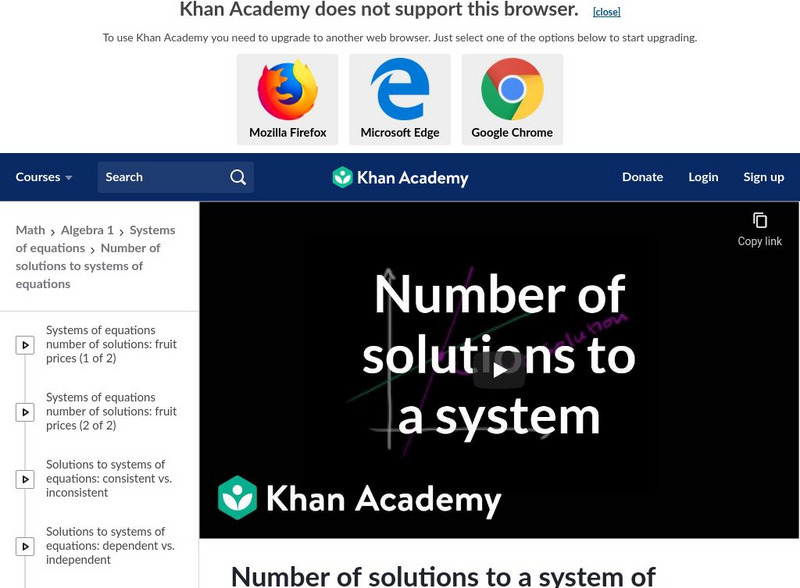Curated Video
Creating Inequalities from Word Problems
In this video, the teacher explains how to create an inequality given a word problem. They review the concepts of variables and inequalities, as well as common mistakes to avoid. They then guide the viewer through the process of solving...
Khan Academy
How to Solve Equations of the Form x/a = b, Linear Equations, Algebra I
Help your students understand how to use their algebraic reasoning to solve a one-step equation, where they must solve for X. Add this video to a lesson or assign it as homework.
Khan Academy
Compound Inequalities 2, Linear Inequalities, Algebra I
Practice solving compound inequalities by isolating an unknown variable. This is the second video in a series of four focused on solving compound inequalities.
Curated OER
Recognizing Patterns
Are you looking for a quick "hook" for your lesson? After watching this video about recognizing patterns, your students will be ready to try out their own ABAB patterns.
Curated OER
What are Equivalent Ratios?
Work through a word problem with the help of a video tutor. You'll learn how equivalent ratios are just like equivalent fractions. Write a ratio as a fraction, reduce each ratio, then determine if they are the same. It's as simple as that!
Curated OER
The Exponent Zero
Can zero be an exponent? Yes, it can! Watch as the exponent 0 defeats number after number turning them into the number 1. This video is developmentally sound
Curated OER
Applications of Combinations
Problem solving is the key to this quick video lesson. The tutor describes all the combinations he can have using five different consumable items. This is a good way to show how learners can make lists to solve numeric problems.
Khan Academy
Khan Academy: Number of Solutions to a System of Equations
Sal is given three lines on the coordinate plane, and identifies one system of two lines that has a single solution, and one system that has no solution. [3:26]
Khan Academy
Khan Academy: Number of Solutions to a System of Equations Graphically
Sal determines how many solutions the following system of equations has by considering its graph: 10x-2y=4 and 10x-2y=16. [6:36]
Khan Academy
Khan Academy: Number of Solutions to a System of Equations Algebraically
Sal solves several examples where he reasons about the number of solutions of systems of equations using algebraic reasoning. [6:01]









